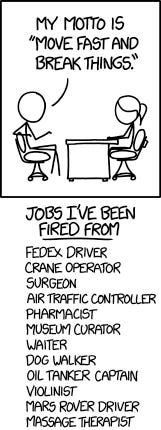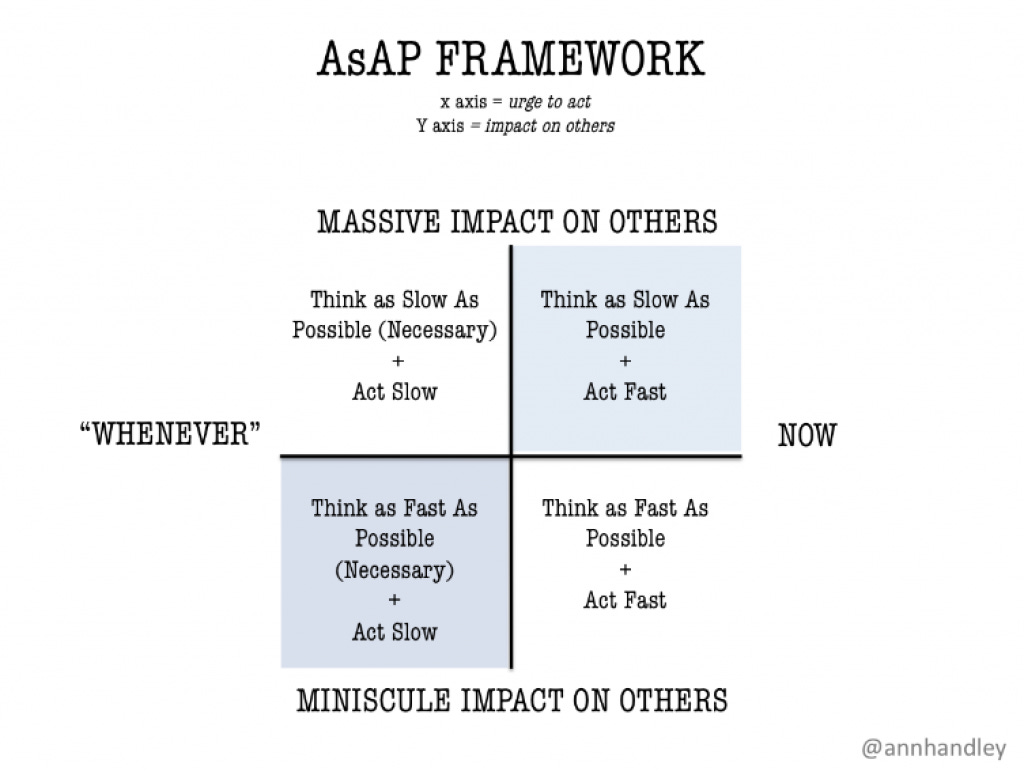Moving slowly and considering things
Hello there :)
Welcome to issue seventy nine of Manufacturing Serendipity, which ordinarily contains a loosely connected, somewhat rambling collection of the unexpected things I’ve recently encountered. This fortnight, thanks to some spectacularly poor planning, it’s not that. Instead, it’s a quick update, plus a brief essay (sorry friends!), normal service will resume in a fortnight.
This newsletter is free to receive, but expensive to make :)
If you’d like to support me, and can afford to do so, please consider buying me a coffee. Your support means the world to me, and keeps this newsletter free for everyone.
Speaking of coffee, grab yourself a suitable beverage my loves, let’s do this thing…
A little shameless self-promotion…
I’m running a new cohort of my ideation course!
This live cohort training course runs over a four-week period from 7th May, with a 90 minute workshop session delivered over Zoom each week.
Attendees will be guided step-by-step through the ideation process I personally use; I’ll suggest a range of exercises attendees might like to complete between sessions, plus they’ll be plenty of time for Q&A each week.
Early Bird tickets are on sale now - but selling fast, join me, it’ll be lovely :)
Moving slowly and considering things

A few years ago my friend Gary shared a story with me. He used to run an agency with his brother, and they had a client who, in a former life, was in advertising.
Way back in the 1980s (before British Gas was privatised), this client of Gary’s was involved in pitching an advertising campaign to them.
The strapline?
Gas your friends
I know, right?
In fairness, maybe there was a little punctuation in there — let’s try a comma:
Gas, your friends
Or maybe a colon?
Gas: your friends
Punctuation is important, however in this instance, I don’t think even a well-placed comma, or colon can save this strapline. Apart from the obvious phraseology problem, do actual human people want to be friends with their energy providers? Honestly, I’d just settle for them charging me a fair price for the energy I consume.
But the real question of course is: how does stuff like this happen? How did this advertising concept make it to the pitch?
I’ve never worked in advertising, but I have had to deliver creative concepts to ridiculously tight deadlines. There’s rarely enough time allowed for creative work, and that can be problematic, because when creative concepts are delivered under extreme time-pressure, we lose the space to reflect on whether or not what we’re delivering is actually a sound idea.
“Every now and then go away, have a little relaxation, for when you come back to your work your judgment will be surer.
Go some distance away because then the work appears smaller and more of it can be taken in at a glance and a lack of harmony and proportion is more readily seen.”
~Leonardo da Vinci
You cannot judge the merit of an idea when you’re too close to it. You can’t see the flaws.
I know this, and yet, all too often I would find myself desperately up against a deadline and I would forgo that time to reflect. Sometimes I’d get away with it — the ideas I was pitching actually were pretty sound. Other times, they really weren’t.
So I can totally understand how “GAS YOUR FRIENDS” came to be pitched, I’ve pitched more than a few similarly ill-thought out concepts too.
But wouldn’t we deliver better work if we moved slowly and considered things?
Obviously we can’t (and shouldn’t) agonise over every single tiny decision — we’d never get anything done. However, for some types of decisions, rather than moving fast (and likely breaking things), I suspect moving slowly might be a better way to go.
But how do we figure out when to move fast, and when to go slow?
I recently rediscovered this article from Ann Handley: Rethinking ASAP (or, the benefits of going slowly at the right moments). There she coined the term AsAP “as slow as possible” and created this framework to help determine when to think and act fast or slow:

In Ann’s 4x4 the x axis is “urge to act”; and the the y axis is “impact on others”. In some instances that’s totally appropriate, however for our purposes, let’s rename the x axis “urgency”, and the y axis “business impact” to make things a little clearer.
I think this is a really useful way to both categorise and think about the type of decision you’re trying to make - essentially you’ve got:
Non- urgent, high business impact - think & act as slowly as possible
Urgent, high business impact - think as slowly as possible, act fast
Non-urgent, low business impact - think fast, act slow
Urgent, low business impact - think & act fast
So your first step in the decision-making process is identifying the type of decision you’re trying to make.
First you consider the business impact — anything with a high business impact (urgent or not) is a “think slow” decision; anything with a low business impact (urgent or not) is a “think fast” decision.
Then (and only then) do you consider urgency. I like this, because all too often when it comes to decision making we only consider urgency, right?
So, how does this affect how we make decisions?
Non- urgent, high business impact - think & act as slowly as possible
This decision requires deep thought, because it’s high business impact. But it’s not urgent — we definitely don’t need to make this decision today if there are other, higher urgency decisions that need to be made.
Action: schedule some time in the future to think and act on this one.
Urgent, high business impact - think as slowly as possible, act fast
Again, this decision requires deep thought, because it’s high business impact. But it is urgent — we probably do need to make this decision today.
Action: schedule some time today to think and act on this one.
Non-urgent, low business impact - think fast, act slow
This decision doesn’t require deep thought, because it’s low business impact. It’s also not urgent - we don’t need to make this decision today if we’re under pressure.
Action: schedule a future date to act on this.
Urgent, low business impact - think & act fast
Again this decision doesn’t require deep thought, because it’s low business impact. But it is urgent — we probably do need to make this decision today. In this instance, making a decision is more important than the quality of the decision (i.e. it doesn’t really matter what you decide, you just need to decide).
Action: Decide right now.
I think that creative concepts (for advertising, PR, or otherwise) sit either in the top right square of Ann Handley’s matrix: “urgent, high business impact”. It’s likely to be urgent because we’re almost always up against a deadline, and there’s a high business impact because if we pitch something “bad” it will almost certainly have a negative impact.
On this basis we should be “thinking slowly” – i.e. leaving as much time to think and reflect on the ideas as possible; and then, “acting fast” (i.e. we do need to make this decision, but we need to do so in a considered way).
This framework resonates strongly with me.
Not every decision we make should be at speed. For some types of decisions, moving slowly and considering things will lead us to deliver better work, and break fewer things.
And I think that’s a very good thing indeed.
Got thoughts or feelings about this? I’d love to hear them!
What I’ve been up to…
I got to see my friend Laura in-person (rather than just over Zoom), and had a lovely time at the theatre with Dad & Diana.
New & upcoming things:
I recently recorded a new episode of the We Earn Media podcast with Britt Klontz & Jaclyn Lambert. We talked a bunch about how Hero (or content-led) PR campaigns can be used to "build a moat" to set your client or company apart from the competition. Listen here, or wherever you get your podcasts.
I’ll be speaking at the Digital PR Summit next week, and the line-up is incredible. You can buy tickets here.
Planning on heading to BrightonSEO in either April or October this year? If so, you might like to sign up for my in-person Content Creation for Digital PR training course.
Looking to improve your ideation skills? Tickets for the new cohort of my Ideation for Digital PR Course are on sale now. Full course details can be found here & you can book your spot here.
That’s all from me for now :)
If you enjoyed this newsletter, please consider sharing it, and if you would like to support me you can buy me a coffee.
Big love,
Hannah x
PS Wanna find out more about me and my work? Head over to Worderist.com



